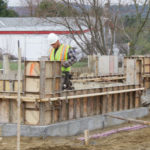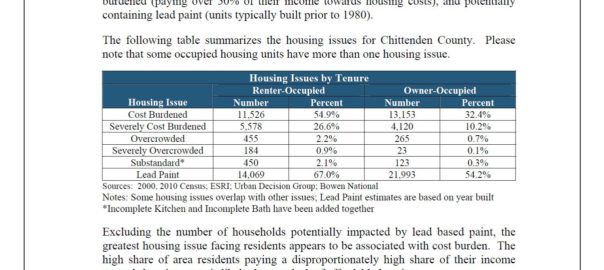Housing is a basic human right and everyone deserves equitable access to safe, accessible, and stable homes, free from discrimination. Having enough quality, affordable, and inclusive homes helps build vibrant communities, and promotes economic growth and opportunity for all. In the face of the ongoing housing crisis in Vermont, where there simply aren’t enough homes for people of all income levels – especially those of lower income and the most vulnerable in our communities – and as we emerge from the covid-19 pandemic, housing justice is of paramount importance.
This week’s Fair Housing Month event- overview:
- Wednesday April 13th, 12pm – Fair Housing: More Than Just Words Lunch and Learn Series – Sexual Harassment in HUD Housing : HUD’s Field Policy and Management will be hosting a Lunch and Learn series for Public Housing Authorities, Multifamily Owners, and Management Agents on a variety of Fair Housing topics with presenters from Fair Housing and Equal Opportunity’s Boston Regional Office.
- Thursday April 14th 12pm-1pm – Landlord Management Series: Fair Housing :Join Angela Zaikowski of Vermont Landlords Association, Cole Elwood of Strong Will Real Estate /Keller Williams Vermont, and Jess Hyman of the CVOEO Fair Housing Project as they cover fair housing in Vermont
- Thursday April 14th 6-8pm – SEABA Virtual ‘Affordable Housing Roundtable’ : A roundtable for Burlington’s South End artists and businesses to better understand recent housing policy reforms and engage on innovative solutions to help tackle the affordable housing challenge in Burlington’s South End.
- Friday April 15th 12:30pm Fair Housing Friday Why Aren’t We Building the Housing We Need? Featuring Katherine “Deac” Decarreau, ED Winooski Housing Authority, Nate Besio, Peer Advocate Counselor Coordinator VCIL, Carol Jaramillo. Community Builder Northgate Resident Owned Corp, in this webinar we will hear about the barriers to housing development, what kind of housing we are building, and why (or why not) the housing we are developing meets the needs of our most vulnerable community members.
Visit the City Hall Gallery at 149 Church Street in Burlington to check out CVOEO’s Fair Housing Project Fair Housing Month exhibit!
April marks the anniversary of the 1968 passage of the Fair Housing Act, which was intended to put an end to inequities in our housing system, eliminate racial segregation, and guarantee that everyone has the right to obtain a home of their choice, free from discrimination. Visit the City Hall Gallery at 149 Church Street in Burlington to learn more about the history of the Fair Housing Act, your rights and responsibilities under Federal and Vermont law, and how Fair Housing is connected to the challenges and opportunities of Vermont’s current housing landscape. These newly designed panels feature our updated protected classes iconography, ways to become an advocate, and a brief history of Fair Housing
For those of you who cannot make it, you can view our PDFs below!
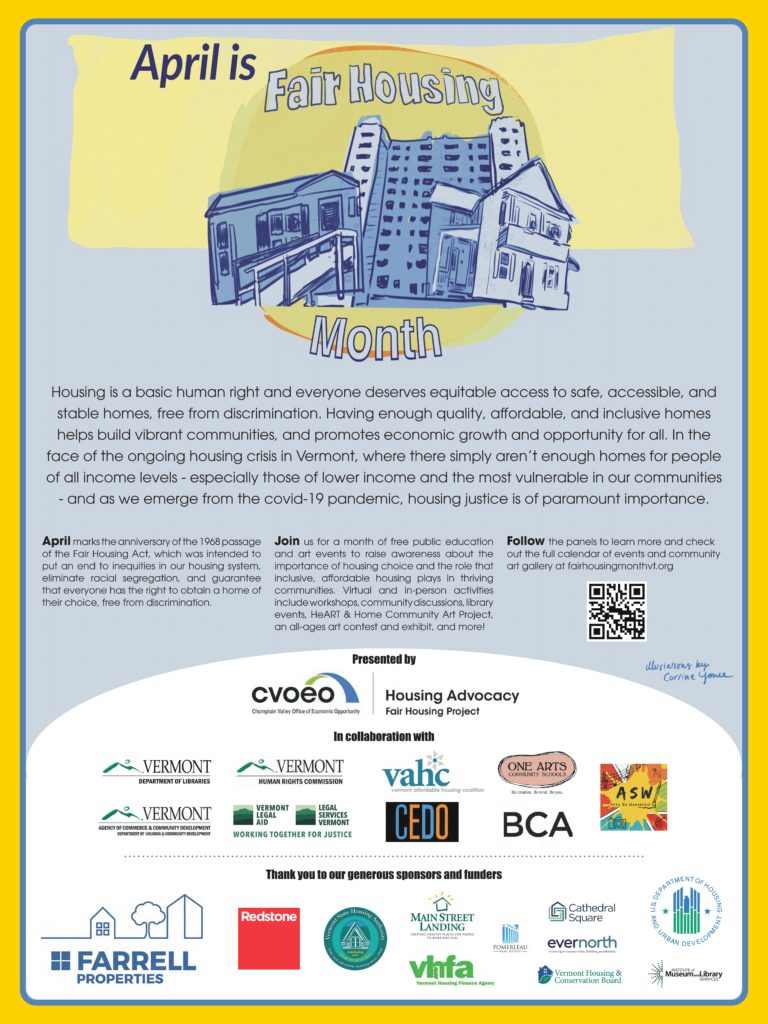
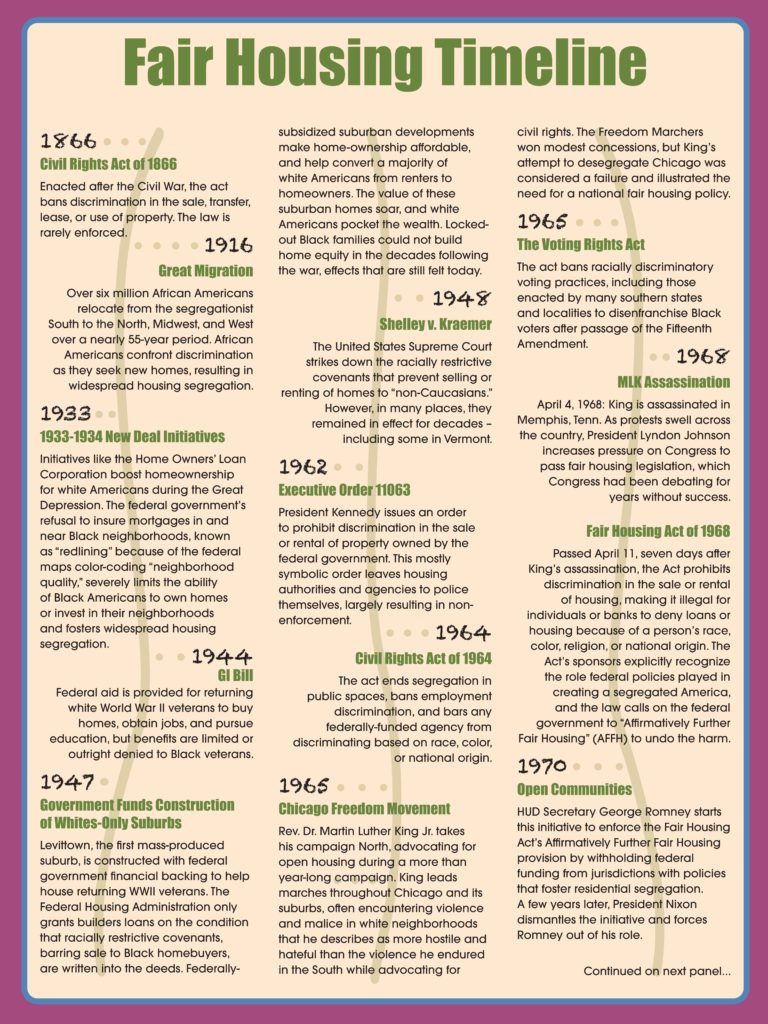
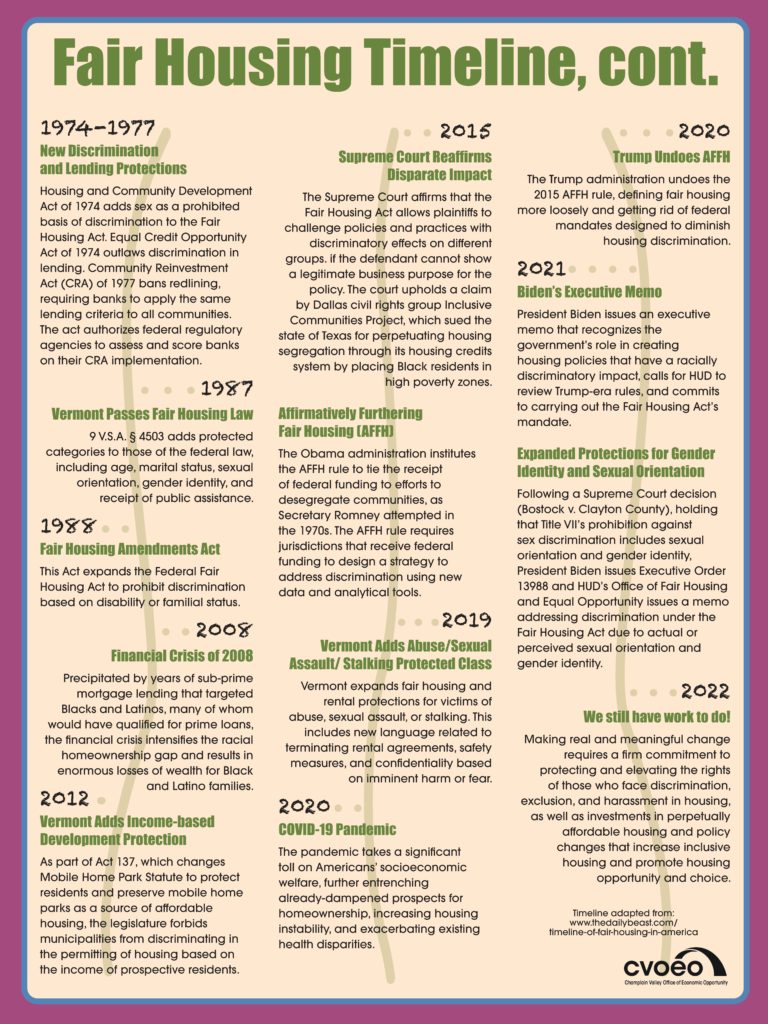
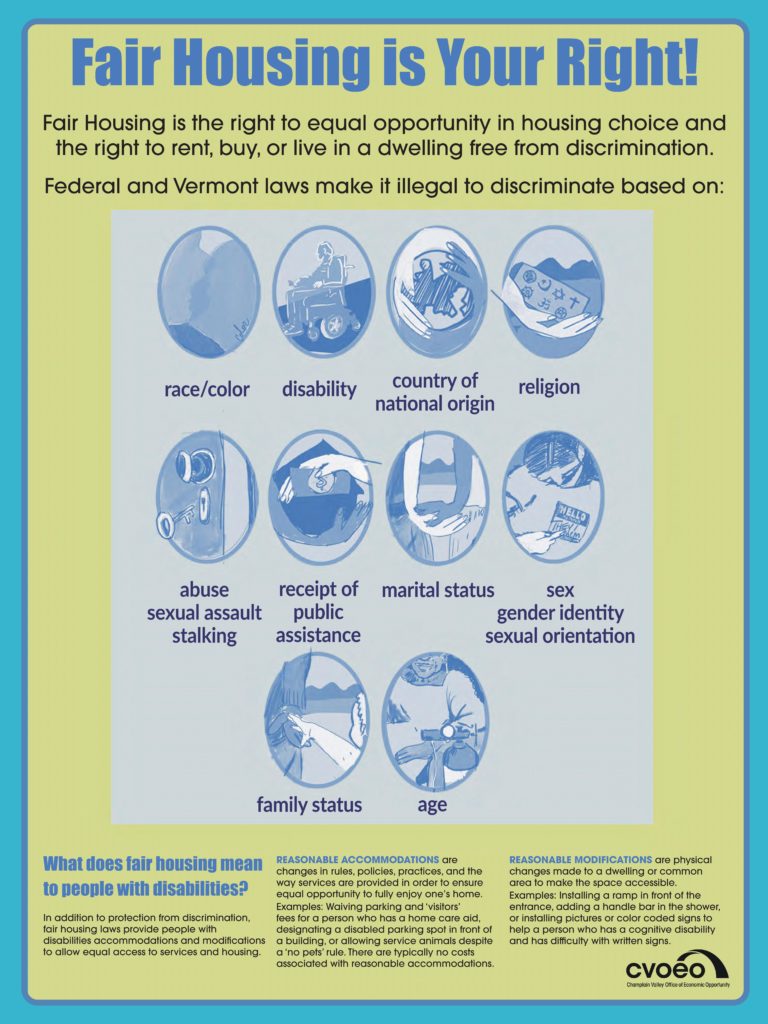
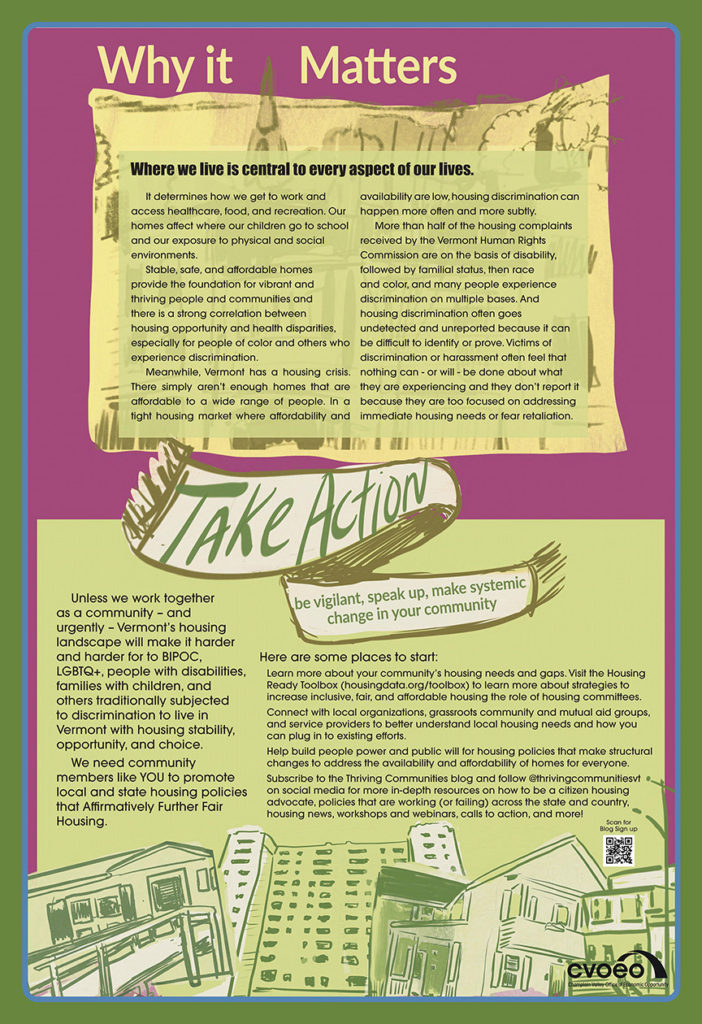
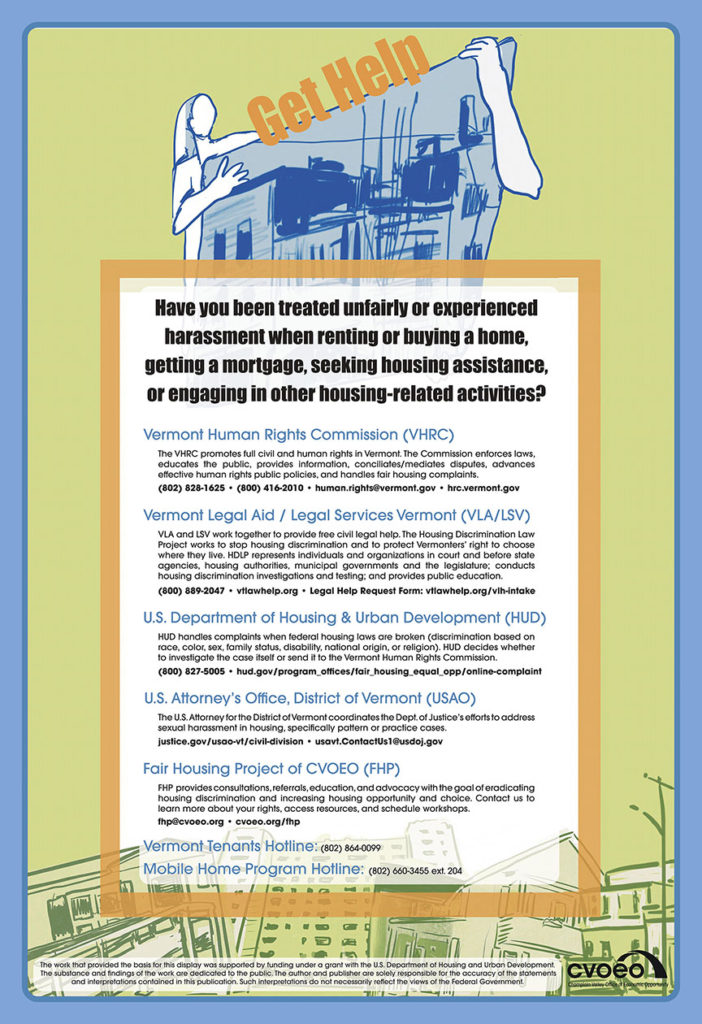
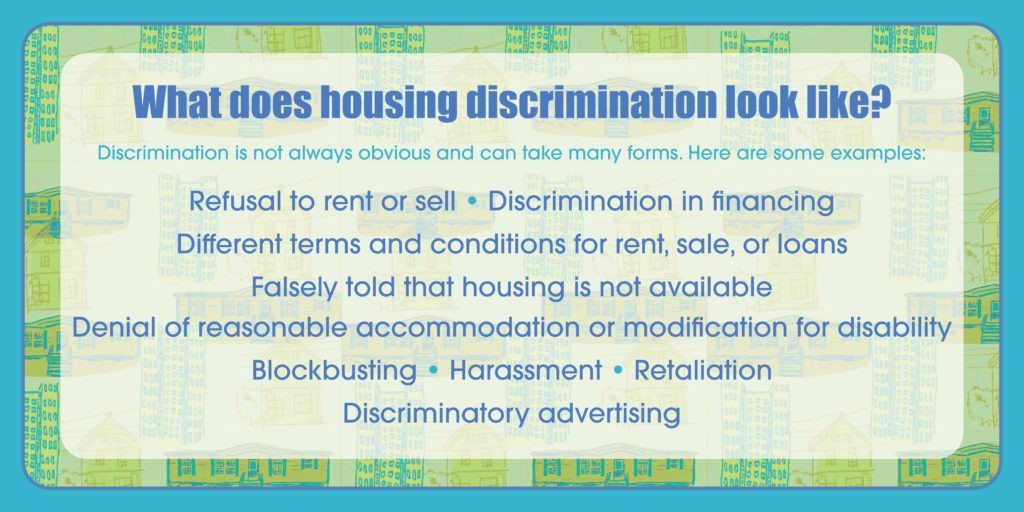
This exhibit was created by the Fair Housing Project of CVOEO with illustrations by Corrine Yonce.
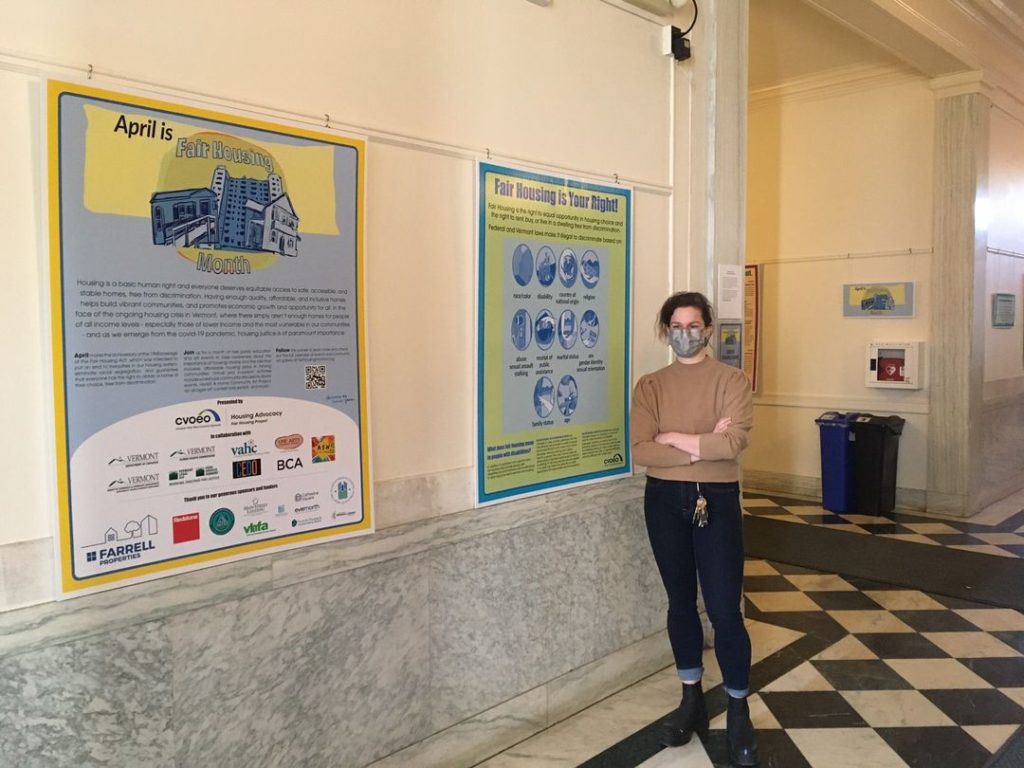
Special thanks to Burlington City Arts & Vantage Press.
